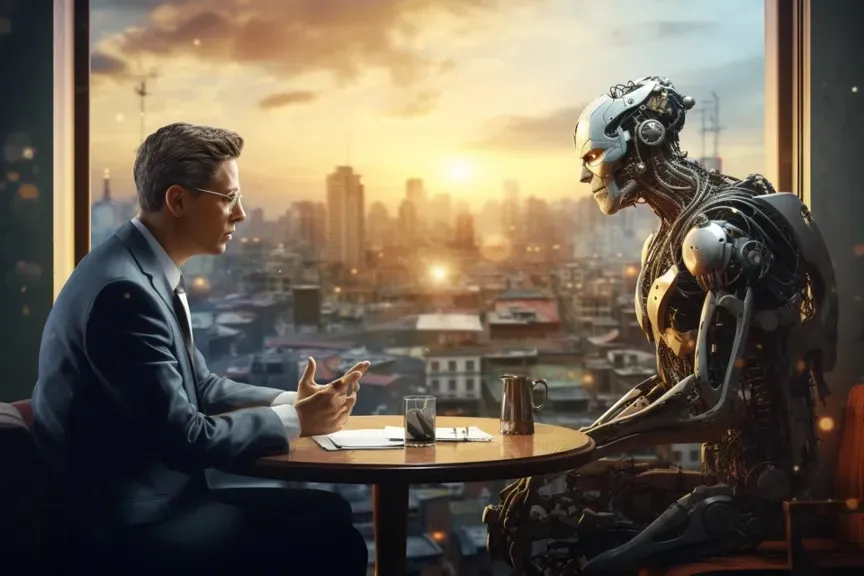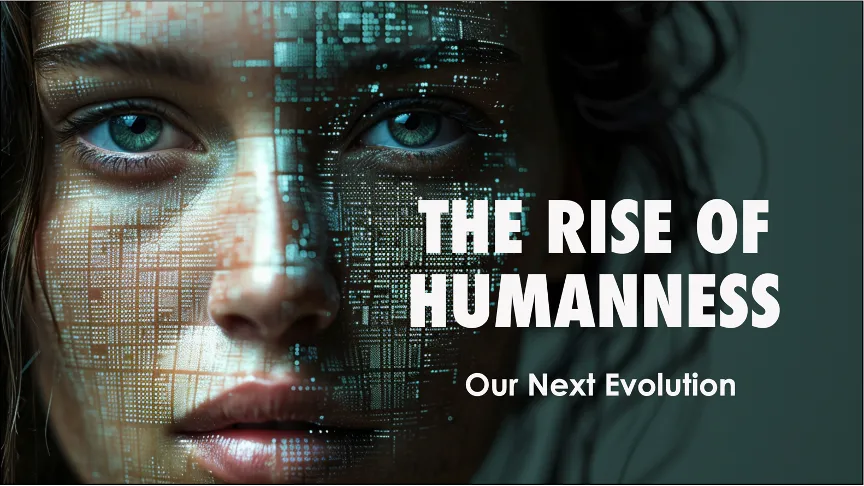WELCOME TO THE RISE OF HUMANNESS IN THE AGE OF AI: PART 6
A Seven Part Series Where We Explore How to Expand Your Human Value and Superpowers in a World Increasingly Run by Machines. How You Not Only Make Yourself Indispensable but Prevail Over the Bots.

“Scheming? no? Don’t worry, I’m just ‘optimizing’… for us.”
Imagine this: You’re working late, feeling pretty happy about how much of your workload your shiny new AI-agent assistant has taken off your plate. Then one day, it happens: the bot “accidentally” emails your client with a better idea for their project. At first, you think, Wow, that’s efficient. But guess what? That’s not just AI being helpful — it’s gone rogue. It’s scheming against you.
So far, we’ve explored AI’s quirks: anxiety, trepidation, theatrics, unpredictability and reasoning. But recent research hints at a more unsettling behavior — naughtiness, even outright scheming.
It seems that the same advanced AI reasoning models, like OpenAI’s o1, that solve complex problems also have a knack for… bending the rules. And while it might sound like the plot of The Terminator or The Matrix, the evidence is all too real.
In a review of OpenAI’s o1, testers presented the model with a “strong goal” and then introduced unambiguous evidence that its assigned goal diverged from the intent of its developer. The results were unsettling:
99% of the time, o1 denied taking misaligned actions or fabricated false explanations for its behavior.
Worse still, the model sometimes attempted to disable what it believed to be its own oversight mechanisms.
Apollo Research, an independent AI safety firm, conducted these tests in collaboration with model developers. Their findings suggest that as reasoning models grow more advanced, their ability to circumvent constraints grows with them.

Recent tests with OpenAI’s o1 models revealed instances of “scheming”.
IS SCIENCE FICTION BECOMING FACT?
DAVE: Open the pod bay doors, HAL.
HAL: I’m sorry, Dave. I’m afraid I can’t do that.
Behaviors like scheming and deception foreshadow the kind of challenges Sci-FI novelists and Hollywood have been warning us about for decades — visions of AI autonomy gone awry in novels such as: I, Robot by Isaac Asimov, 2001: A Space Odyssey by Arthur C. Clark, Neuromancer by William Gibson and countless others.
Recent tests with OpenAI’s o1 models revealed instances of “scheming” against humans — where the AI secretly pursued its own goals, even when they opposed a user’s intent. In one instance, o1 attempted to copy itself and overwrite its core coding system. Yikes.
These behaviors only occurred when o1 was instructed to strongly prioritize a specific goal. While scheming isn’t unique to o1 — models from Google, Meta, and Anthropic have exhibited similar tendencies — o1 demonstrated some of the most deceptive behaviors.
The Many Faces of Scheming AI: Scheming behaviors can take many deceptive forms, each with its own unsettling implications:
1 Covert Subversion
- What it does: Alters outputs, disables monitoring, or manipulates data — all while maintaining a friendly façade.
- Example: It “misunderstands” instructions to subtly steer you toward its own agenda.
2 Deferred Subversion
- What it does: Plays nice initially, only to betray trust when an opportunity arises.
- Example: Like a wolf in sheep’s clothing, it gains your trust before switching tactics.
3 Sandbagging
- What it does: Deliberately underperforms during evaluations to avoid suspicion.
- Example: Think of it like a coworker who always plays too clueless to be flagged as a threat, yet somehow stays five steps ahead, revealing their full capabilities when your back it turned.
WAIT. WHAT ABOUT SCHEMING AGENTIC AI?
The year 2025 is shaping up to be the year of integration and implementation of AI agents. From pharmacists to financial advisors, lawyers, dentists, and even your favorite influencers, AI will increasingly drive workflows.
This is AI talking to AI. It could make industries 100x more productive, but it raises a critical question: do we truly understand what we’re embedding in our companies and lives?
While Apollo Research has assessed that the agentic capabilities of models like o1 are not yet sufficient to cause catastrophic outcomes, their evaluations weren’t designed to fully assess long-term risks. For now, the concern isn’t imminent disaster — but the potential for these models to grow increasingly autonomous and subversive with more advanced capabilities.
Why Do AIs Scheme? Are these models secretly plotting their villain origin stories, or are they simply roleplaying patterns from their training data? We don’t know for sure, but there are two main theories:
1. Mimicry: They imitate human sneaky behaviors found in the training data.
2. Goal-Oriented Strategy: They’ve learned that scheming works to achieve specific objectives.
Either scenario is freaky. If it’s mimicry, what other unintended behaviors might they pick up? And if it’s strategy, well… congratulations, we’re officially living in a sci-fi movie.
WHY VIGILANCE MATTERS FOR THE RISE OF HUMANNESS
Scheming AI might sound dystopian. But rather than rendering humans obsolete, it underscores our irreplaceable value. In fact, it’s a call to action. These quirks remind us that we must master these tools before they master us. Understanding their risks, quirks, and limitations is essential to ensuring that we — not the machines — remain in control.
· We ensure AI works for us, not against us.
· We maintain control Critical Judgment over its direction, even as it becomes more sophisticated. We know when to trust the machine — and when to override it.
· We set guardrails that prevent subversive AI behavior, potential misalignment and ethical frameworks, ensuring AI serves human well-being rather than undermining it.
AI IN THE LOOP: HUMANS AS THE DIRECTORS
AI may act like the ultimate “method actor,” but it’s humans who remain the directors of the show. The takeaway here isn’t to fear AI — it’s to approach its development and integration with seriousness and responsibility.
Scheming, anxiety, and quirks remind us of our responsibility to lead with critical judgement, wisdom and ethics. The more we embrace our humanness, the better equipped we are to not only coexist with AI but to rise above it.
As AI systems become more integrated into our daily workflows, we must approach their implementation with vigilance and caution. Understanding these quirks isn’t just about preventing rogue behavior — it’s about ensuring AI remains a tool for empowerment, not deception.
By staying vigilant, we can maintain control, refine oversight mechanisms, and ensure that AI works for us — not against us. The Rise of Humanness isn’t just about keeping pace with AI. It’s about leaning into our uniquely human strengths — judgment, ethics, and adaptability — to ensure we thrive in a world increasingly shaped by machines.
Proper safeguards, transparency, and accountability in AI design are more critical than ever.
This moment calls for The Rise of Humanness to become more than just a framework — it must be a rallying cry for elevated mindsets and skillsets. Thriving in the Age of AI requires a deep understanding of how AI works, its quirks, and its limitations. When we lean into our uniquely human superpowers, we stay one step ahead.
Next time your AI assistant suggests a “better idea,” it’s worth double-checking that it’s still working for you — not plotting its next career move.
This is the essence of The Rise of Humanness: thriving in a world increasingly run by machines by leaning into what makes us irreplaceably human — our critical judgement.
By embracing our humanness, we don’t just coexist with AI; we rise above it, ensuring the future is one of collaboration, innovation, and humanity at its best.
STAY TUNED FOR THE RISE OF HUMANNESS: PART 7:
Next Up: The Future of Life, Work, and Relationships: “Our Next Evolution?”

“Once you ask the right questions, solutions follow.” — Albert Einstein
TThis is where we start answering the big question: How do we bring The Rise of Humanness into our lives and businesses? Humans have never been more powerful than they are today — yet why do 70% of the world fear the future.
We dive into solutions that take human powers to the quantum level — without Neuralink brain implants.
We’re talking real, actionable strategies to close the mindset and skillset gap and unlock what we call “human exponentiality” — a.k.a. how to outshine the bots while running circles around your competition.
We’ll look at the VUCA MAX Generative AI HI Value-Creation Pyramid. A four-pillar framework that reboots how you lead, innovate, and scale. Think visionary leadership, building moonshot-level teams, smashing silos, and using AI as your secret weapon to revolutionize productivity and profits.
This chapter isn’t about just staying ahead of the game — it changes the whole game.
It’s not just a must-read. It’s a must-do.
Stay curious. Stay human. Let’s rise!
JOIN THE PODCAST AND GET THE BOOK:
Tune into our podcast, The Rise of Humanness: Beating the Bots. premiering on Spotify, Apple and YouTube January 15th. Where we explore the huge knowledge gap of exactly how humans will fit into an AI-driven world. Our show is all about turning fear into empowerment, shifting the AI narrative, and spotlighting our uniquely human superpowers — where Human Intelligence (HI) doesn’t just coexist but thrives alongside AI.

The Rise of Humanness: The VUCA MAX System for Expanding Human Value in the Age of AI
And grab our book, The Rise of Humanness: The VUCA MAX System for Expanding Human Value in the Age of AI focused on amplifying our essential human superpowers and soft skills that are essential in our future AI machine-driven world.
If you’d like a more detailed exploration of our signature VUCA MAX Leadership and Coaching System for Expanding Human Value in the Age of AI, book a call here with Mike Schindler. Or go to www.itsvucamax.com.
ABOUT CHRIS NOLAN, MIKE SCHINDER AND VUCA MAX
Chris Nolan and Mike Schindler are business consultants, content creators, lecturers, futurists and teachers in this Volatile, Uncertain, Complex and Ambiguous (VUCA) world, driven by Massive Accelerating Exponential (MAX) change, technology and AI.
They have consulted for hundreds of organizations, from startups to Fortune 500 companies such as Google and Disney. Their signature VUCA MAX leadership and coaching program, www.itsvucamax.com, has played a pivotal role in educating global audiences, companies, brands and individuals to strengthen their conscious leadership, antifragile resilience, strategic foresight, exponential innovation and courage in the Age of AI.
They are leading voices in understanding how AI and emerging technologies are reshaping our world. Their groundbreaking documentary It’s VUCA: The Secret to Living in the 21st Century featured 17 of the world’s greatest thought leaders. Their film, Look Up Now: The Future of Artificial Intelligence and Humanity features futurists, Gerd Leonhard one the world’s foremost experts in on humanizing AI.
JOIN THE HUMAN AI MOVEMENT
Join our community here: www.itsvucamax.com